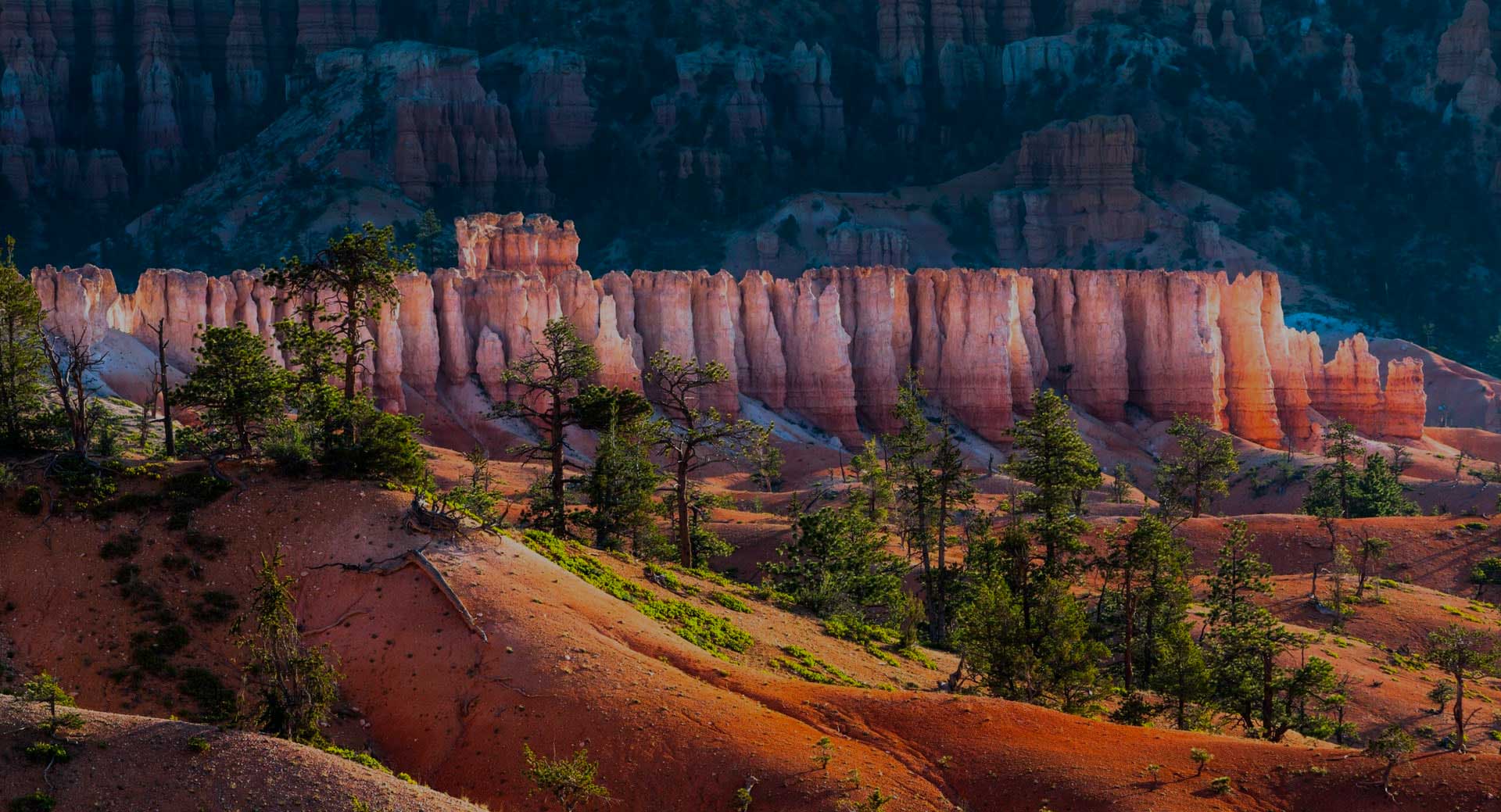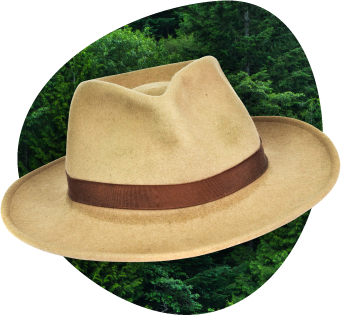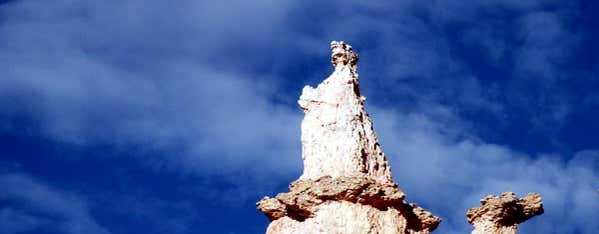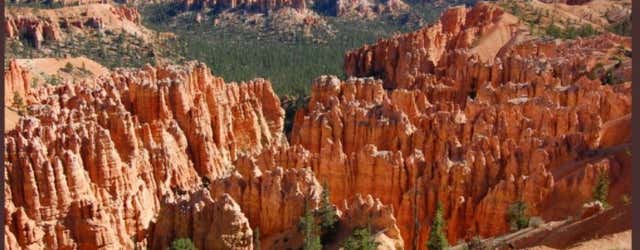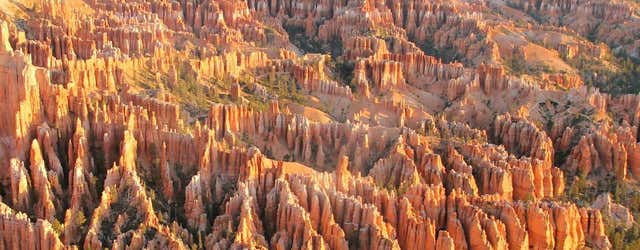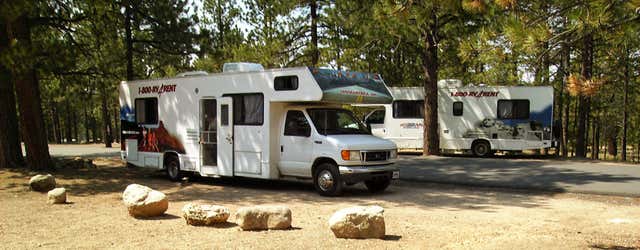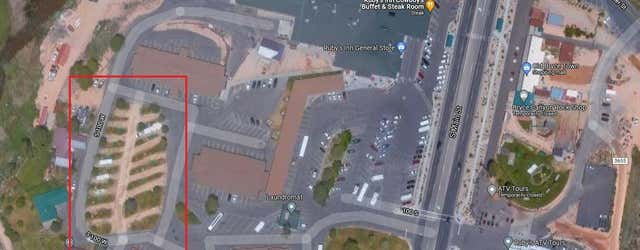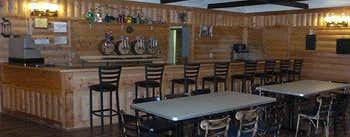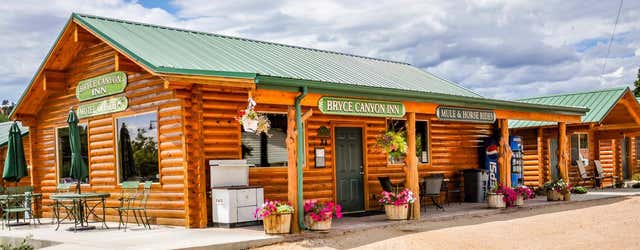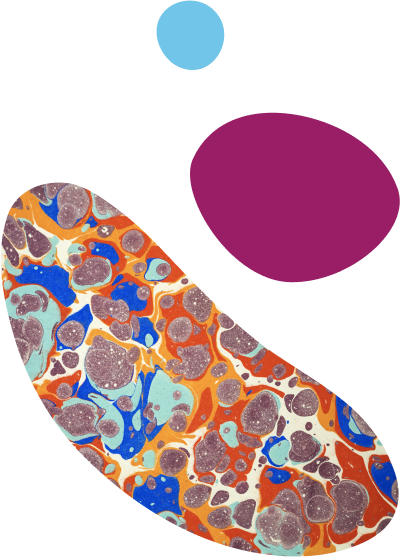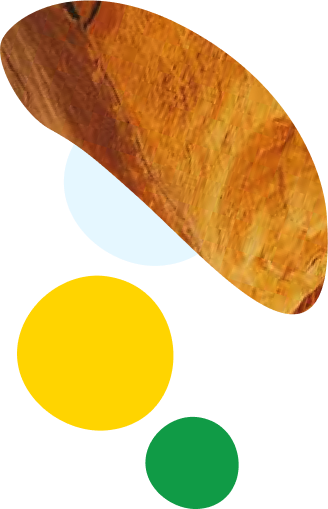The centerpiece of Bryce Canyon National Park is a natural amphitheater, created through millions of years of wind and water erosion, filled with enchanting rock spires—some hundreds of feet tall—called hoodoos. Viewpoints along the rim of the amphitheater offer endless opportunities for photos or simply enjoying the constant play of sun and clouds on the landscape. Numerous hiking trails lead down into the bowl filled with hoodoos, many of which take on unique personalities thanks to their resemblance to animals and people.
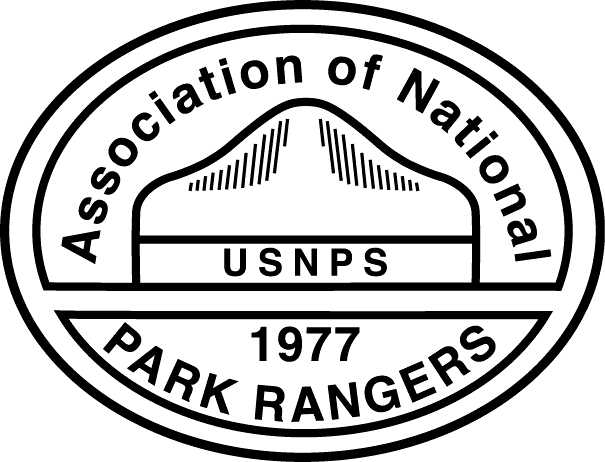
Written for you by park rangers
Who knows a national park best? Yep, the rangers who live and breathe its fresh, clean air every day. That’s who we turned to for help in creating this guide. Roadtrippers has partnered with the Association of National Park Rangers and convinced its rangers to spill their secrets for your benefit.
Planning a trip to Bryce Canyon National Park
Getting to and around Bryce Canyon National Park
The closest major airports are Las Vegas International Airport and Salt Lake City International Airport. Both are 4 hours from the park.
The nearest airport to Bryce is in Cedar City, Utah, about 80 miles from the park; Cedar City Regional Airport (CDC) is served by Delta Airlines, with connecting flights from Salt Lake City. The drive from Cedar City to the park is about 1.5 hours. St. George Regional Airport (SGU) is roughly 2.5 hours from the park.
Tiny Bryce Canyon Airport (BCE) is a base for sightseeing flights, but is also utilized by charter airlines to bring visitors to the park, as well as people flying to the park on their own private planes. The airport is just 4 miles from the park entrance.
Once on the ground, the most scenic approach to Bryce Canyon from the south (including from Las Vegas) is through Zion National Park. Take Interstate 15 north to Utah State Route 9, which leads through Zion. (To bypass the often crowded park roads in Zion, you can take I-15 north to State Route 20). I-15 is also the major route to Bryce National Park from Salt Lake City, which sits about 270 miles north of the park.
There are no public transportation options for getting to the park.
St. George is a rather small airport, but it does have direct flights to Dallas, Phoenix, Salt Lake City, Denver, and Los Angeles.
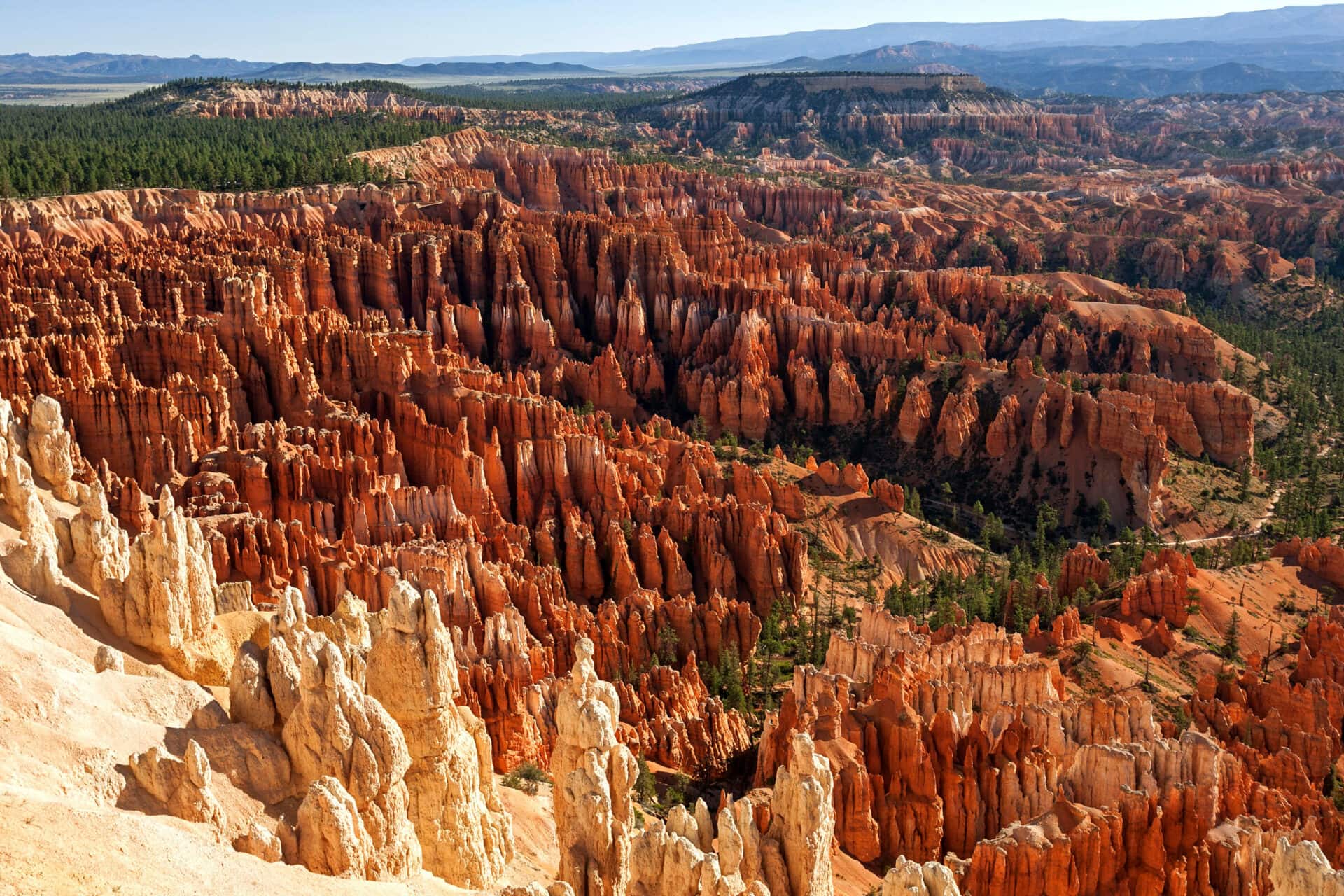
When’s the best time to visit Bryce Canyon National Park?
Bryce Canyon National Park is open year-round. May through September is the peak season for visiting, but don’t expect to always enjoy “summer weather” if you go during these months. The park is located at more than 7,600 feet above sea level, and the high elevation contributes to sometimes dramatic temperature variations, particularly in the spring and fall.
Spring snowstorms are not uncommon at Bryce, some with accumulations heavy enough to impact travel, including road closures. Daytime temperatures in the spring typically range from the 40s to the 60s, but dips below freezing at night are frequent, especially in March and April.
Most daytime summer temperatures often fall pleasantly in the high 60s to low 70s, with the average daily temperatures hitting 80 in July. Summer-like weather can continue into September. July and August are the rainy seasons in Bryce, often marked by afternoon thunderstorms; lightning is your warning to seek shelter indoors until the storm passes.
Fall in Bryce Canyon sees daytime temperatures fall from the 70s in September to the 40s in November, with snowstorms typically returning in October.
Snow on the ground can make the enchanting landscapes of Bryce even more magical, especially on a ranger-led snowshoe hike or full moon hike. Crowds are at their lowest ebb at this time of year, making it a great choice for solitude seekers. Expect daytime temperatures in the 30s and nighttime temperatures in the teens.
If you’re making a trip through Utah and attempting to hit up several national parks, remember that Bryce is several thousand feet higher than Zion National Park, so expect the temperatures to be significantly lower.
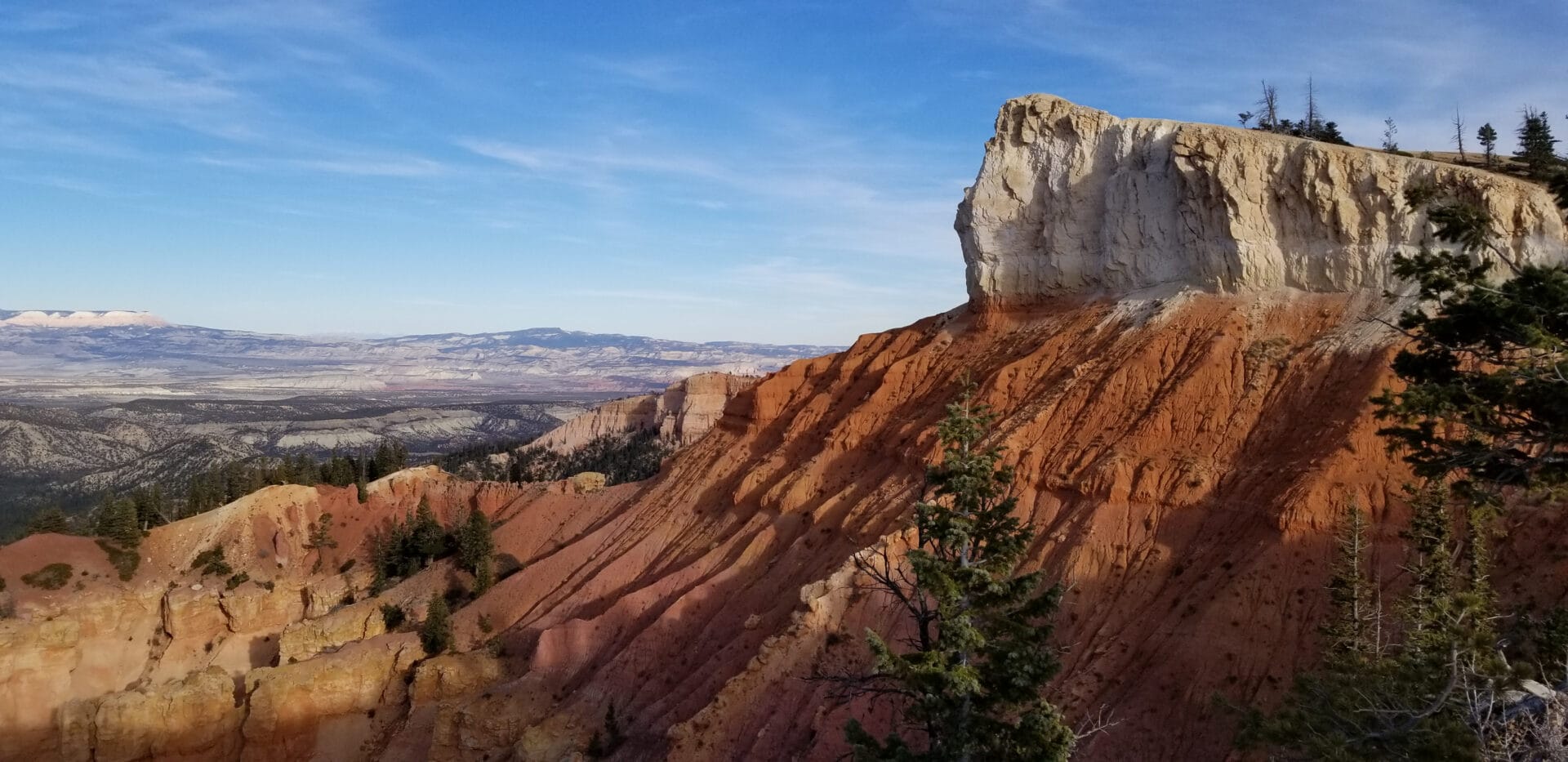
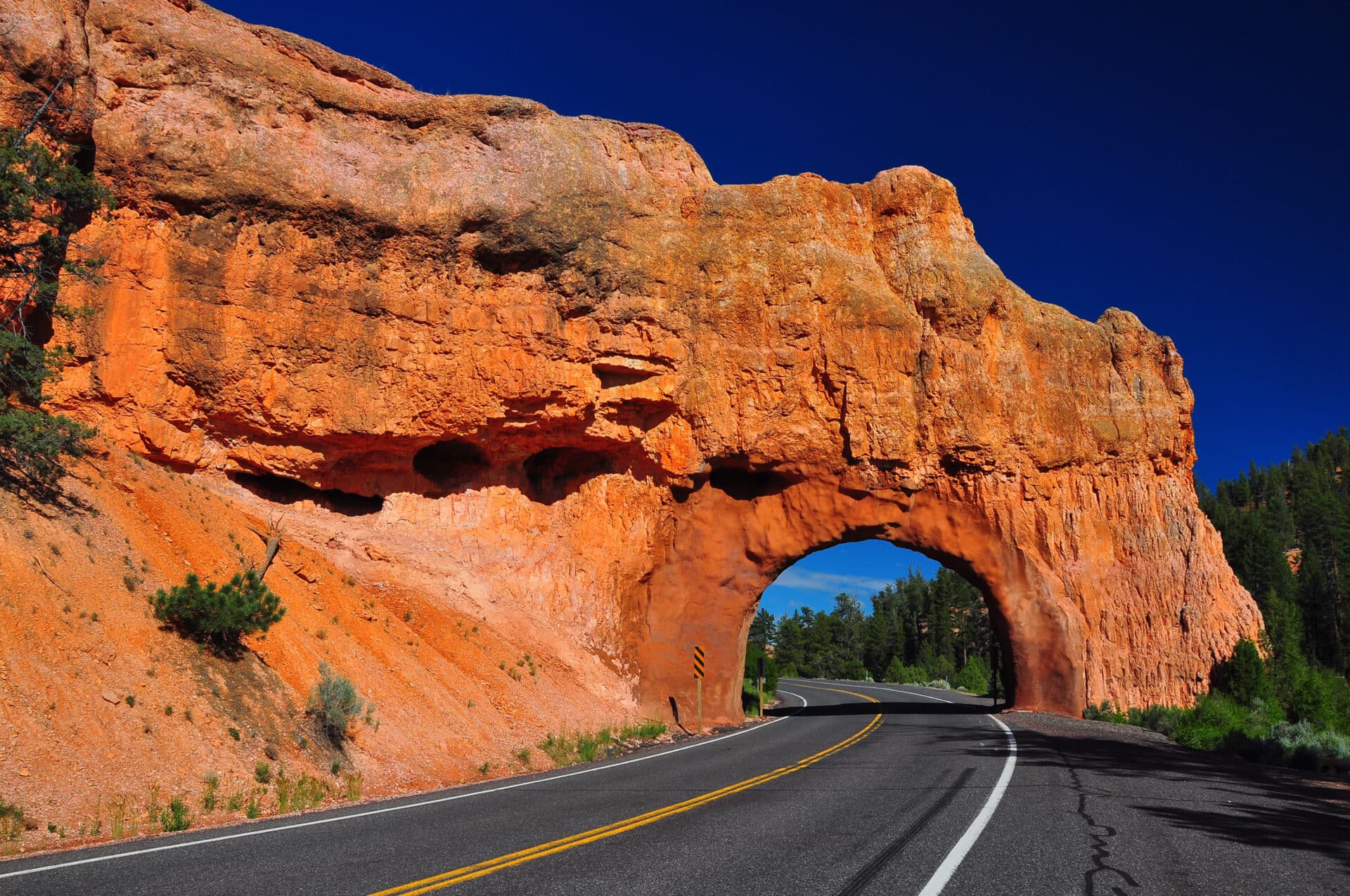
The free Bryce Canyon Shuttle Service is the best way to get around the park. The shuttle runs April to mid-October, with stops throughout the Bryce Amphitheater area, including the visitor center, campgrounds, the Bryce Lodge, and scenic spots like Bryce Point, Inspiration Point, and Sunrise Point. The shuttle also serves several hotels just outside of the park boundaries (Ruby’s and the Best Western Grand) and makes a stop in Old Bryce Town. Buses depart about every 15 minutes.
State Route 63 serves as the main road in Bryce Canyon National Park, running the entire length of the park from the north entrance to a dead end near Rainbow Point—a distance of 18 miles. The drive from the visitor center to the end of the road takes about 40 minutes.
In the amphitheater area, Lodge Loop Road provides access to several viewpoints, trailheads, the North Campground, and Bryce Canyon Lodge. There are also a few other short side roads leading off State Route 63 to Sunset Campground, Inspiration Point, and Bryce Point. Once you get beyond the amphitheater, the road is known as the Southern Scenic Drive.
Fairyland Road, a spur off State Route 63 close to the park entrance, leads to Fairyland Point and trails into the Fairyland section of the park. State Route 12, which intersects State Route 63 in Bryce Canyon City, heads east to the Mossy Cave Waterfall and several hiking trails before exiting the park and turning south toward the town of Tropic.
Cars and RVs can easily navigate the paved park roads, which are routinely plowed and sanded in winter to keep snow-related closures to a minimum. However, vehicles longer than 20 feet are prohibited from parking during the day in many of Bryce’s major parking areas during the high season of mid-April to mid-October, when park shuttles are running. RVs can still park in campgrounds, the parking lot for the Bryce Canyon Lodge, the shuttle station in Bryce Canyon City, and the overflow parking lot at the visitor center.
Unlike in Zion National Park, Bryce’s shuttle system is not mandatory for visitors to use. The shuttle is highly efficient for visiting the amphitheater area, but if you want to venture into the more remote southern or eastern areas of the park, you’ll need a car.
Things to do in Bryce Canyon National Park
Scenic drives and viewpoints
The only way to explore the amphitheater at Bryce Canyon National Park is on foot, but visitors can also drive to a number of spectacular viewpoints overlooking the park’s famous hoodoos and other scenic vistas.
Prominent viewpoints include Sunrise Point, a popular early morning destination close to the visitor center with unmatched views of the hoodoos; Sunset Point, a great spot to view Thor’s Hammer and the “Silent City” of the canyon hoodoos; Inspiration Point, where you can see Boat Mesa as well as the canyon in all its multihued glory; and high-elevation Bryce Point.
All of these viewpoints can be stops during an auto tour along the main park road (SR-63). The 18-mile drive beginning at the park entrance will quickly take you to the amphitheater area, the main hub of activity within the park. Beyond 3 miles, however, attractions and pullouts get much more spread out. Stops include Swamp Canyon, Farview Point, the very popular Natural Bridge, and Agua, Ponderosa, and Black Birch canyons. At the end of the road is a small loop accessing Rainbow Point and Yovimpa Point, offering views from 9,115 feet across the Kaibab Plateau to the north rim of the Grand Canyon.
Ranger programs
Monthly, ranger-led full moon hikes are perhaps the coolest thing to do at Bryce Canyon—they’re so popular that you have to enter a lottery to snag one of the limited spots on the hike. Rangers also lead daily talks about the geology of hoodoos, astronomy, evening campfire events, and occasional guided hikes to places like Mossy Cave.
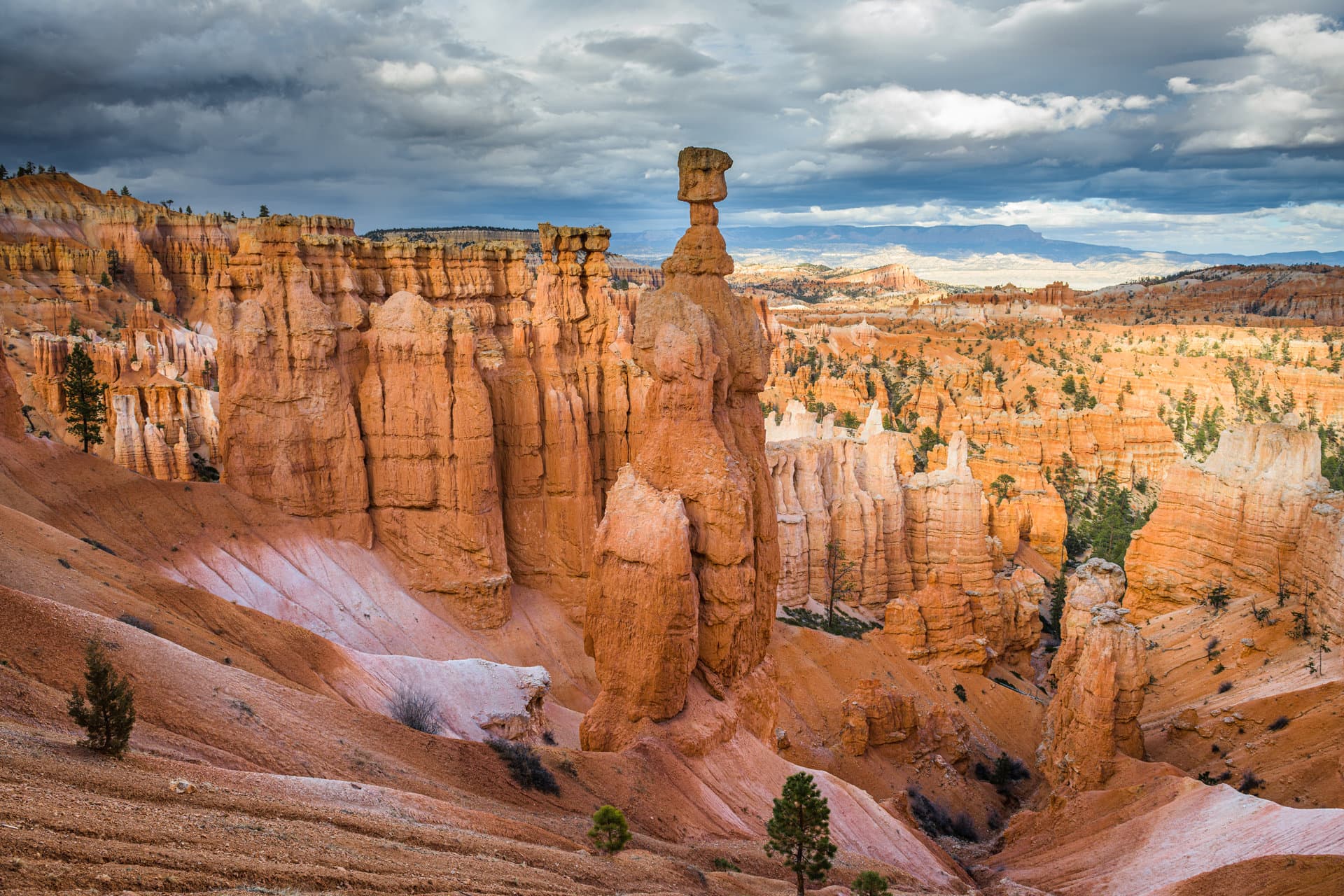
Events
Bryce Canyon National Park hosts a robust schedule of events throughout the year. The annual Astronomy Festival, held in June, attracts amateur and professional astronomers from around the world for a 4-day event that features guest lectures, educational programs, and ample opportunity for stargazing in this certified International Dark Sky Park. In July, the focus turns terrestrial with the Geology Festival, while winter programs include a Bird Counting Outing in December.
Recreation
Hiking is by far the most popular activity in Bryce Canyon National Park, with a variety of day-hiking trails rated from easy to challenging. Most trails are in the Bryce Amphitheater area, but others start at various viewpoints along the park road and visit less-seen parts of the park. Horseback riding and bicycling are other ways to experience Bryce: Canyon Trail Rides offers guided horseback rides into the amphitheater, while several vendors are authorized to lead bike tours of the park.
Bicyclists, pedestrians, roller or in-line skaters, longboarders, wheelchair users, and cross-country skiers are among those who enjoy the 18-mile Shared-Use Path, a paved trail leading from the visitor center to Inspiration Point. Biking is also permitted on the main park roads, but not on any unpaved trail (so no mountain biking).
Thor’s Hammer is the tallest hoodoo in Bryce Canyon National Park, making it an excellent wayfinding tool and reference point whether hiking inside the canyon or observing from the rim.
Hiking in Bryce Canyon National Park
The 1-mile, paved segment of the Rim Trail between Sunset and Sunrise points is the easiest hike in the park, but nonetheless offers unforgettable views of the Bryce Amphitheater. Other easy hikes include the trail to Mossy Cave, which is less than a mile long, and the Bristlecone Loop from Rainbow Point or Yovimpa Point. For a longer hike, the complete Rim Trail is 5.5 miles from Fairyland Point to Bryce Point; the trail does include some elevation gain and rough terrain, but you can hike one way and take a park shuttle back rather than having to turn around and retrace your steps.
The 1.3-mile Navajo Loop Trail is a moderate hike that takes you through a slot canyon, an up-and-down journey involving 550 feet of elevation change. The 1.8-mile Queens Garden Trail is the easiest way down into the amphitheater, and many visitors combine the Navajo Loop and Queens Garden trails to create a moderate 2-to-3-hour, 2.9-mile loop hike that includes sights like Thor’s Hammer, Queen Victoria, and Two Bridges.
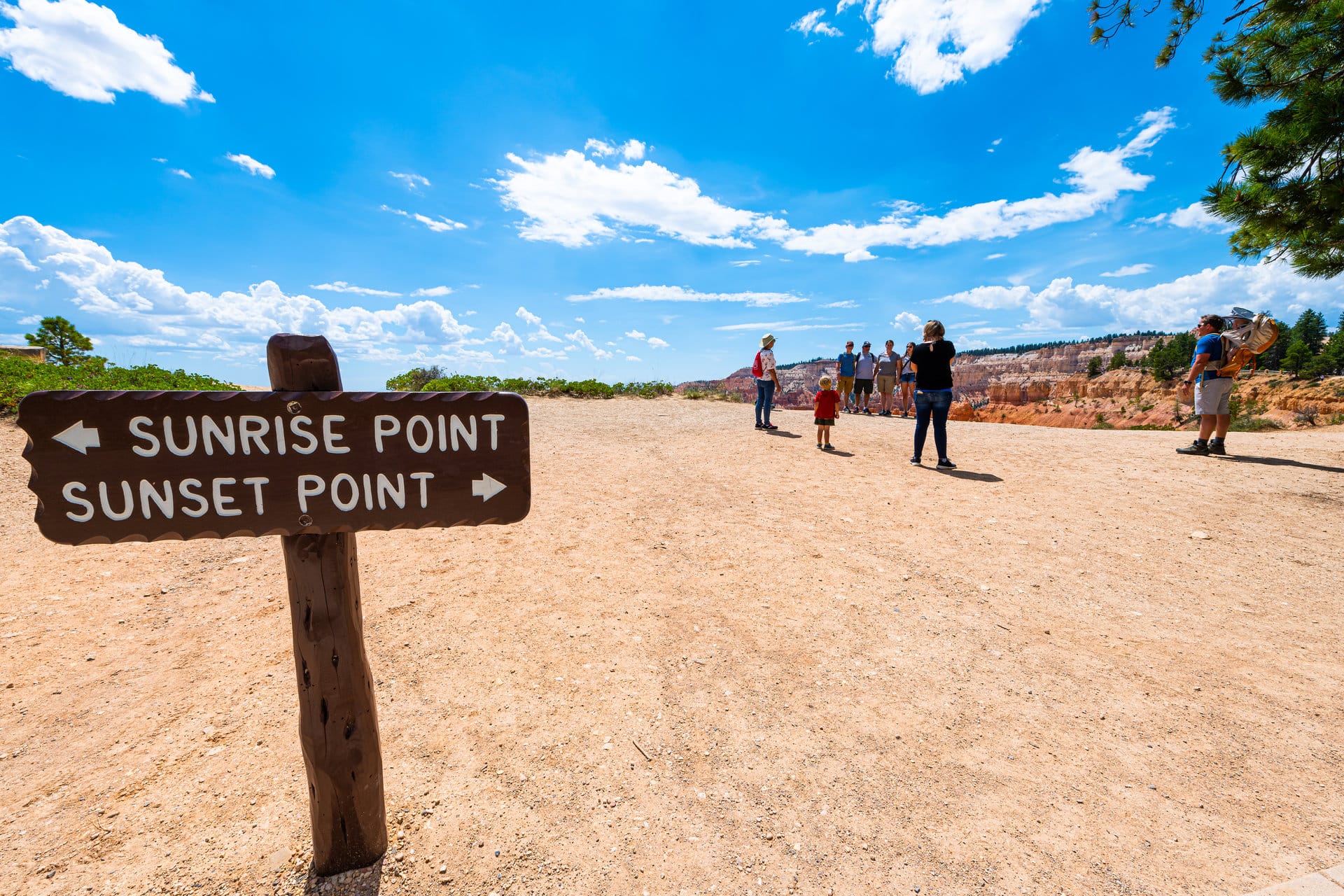
More challenging hikes include the 5.5-mile Peekaboo Loop, which includes the Wall of Windows, and the uncrowded 8-mile Fairyland Loop, which starts at Fairyland Point and includes visits to the Chinese Wall and Tower Bridge.
The Under-the-Rim Trail is the main destination of backcountry hikers and campers: It’s a 22.9-mile journey through forests and meadows, and it offers the opportunity to camp at one of 10 campsites along this trail and the connected Riggs Spring Loop Trail.
The 18-mile Shared-Use Path between the Visitor Center and Inspiration Point is paved and wheelchair accessible. The paved 1-mile section of the Rim Trail between Sunrise and Sunset points has very little elevation change and is also wheelchair accessible.
Pets are only allowed on paved trails, viewpoints, roads, and picnic areas, but can be taken on the Rim Trail between Sunset and Sunrise Point.
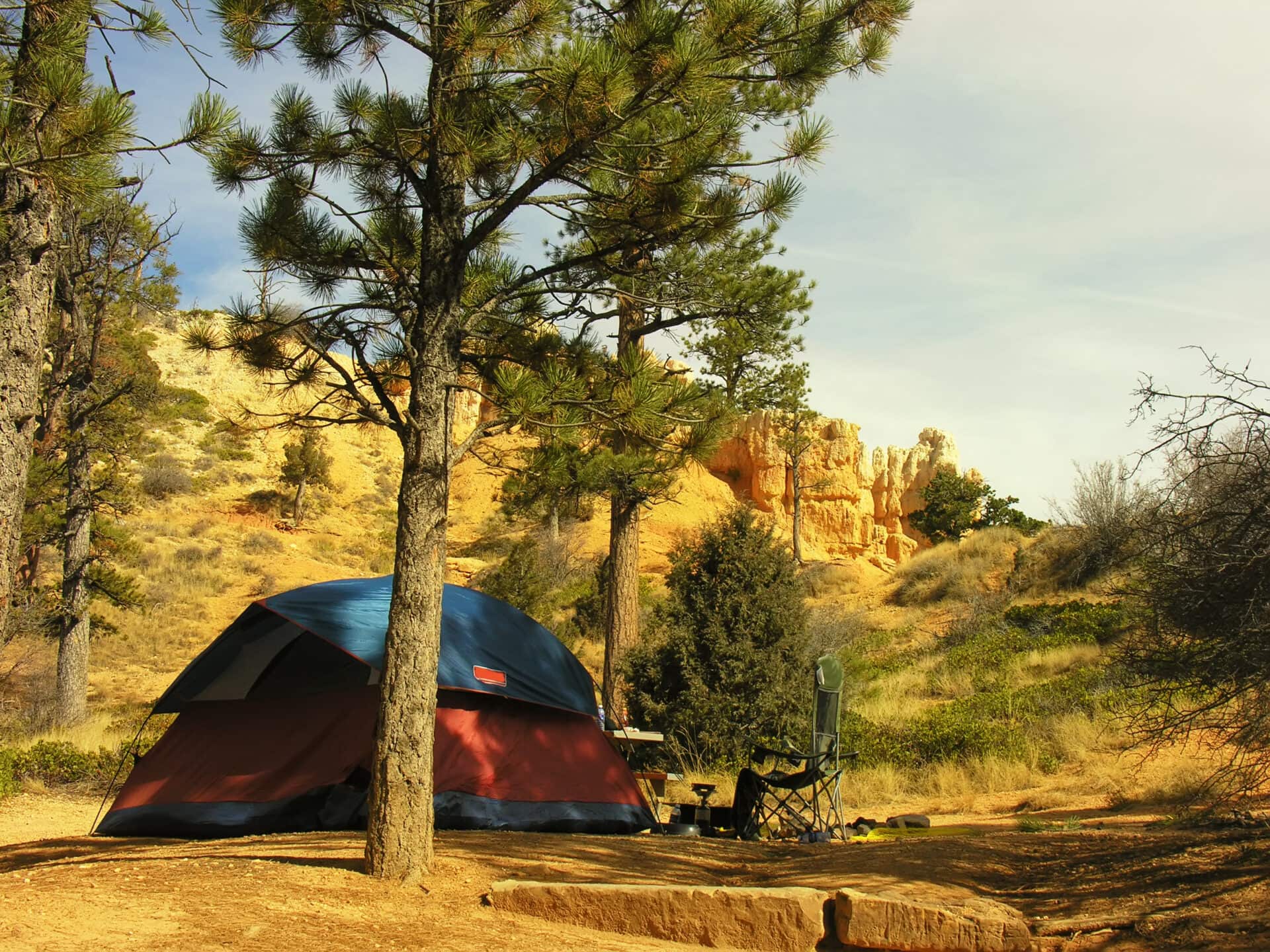
Where to stay in and around Bryce Canyon National Park
Dating to the 1920s, the 114-room Lodge at Bryce Canyon is built in iconic National Park Service architecture—or “parkitecture”—resembling an oversized log cabin close to the rim of the canyon, with a rustic lobby and stone fireplace at its core. In addition to lodge rooms, accommodation options include motel rooms and cabins.
There are two campgrounds located within the park, both with sites for tent and RV camping. North Campground, located close to the visitor center, has a total of 100 sites and is open year-round. Sunset Campground is about 1.5 miles away and has an additional 99 sites; it’s open mid-April to October. Both have fire grates and potable water but no sewer, water, or electrical hook-ups. Rates are $20 per night for tent camping and $30 for RVs. Reservations at both campgrounds are required from May through October.
The strenuous, 22.9-mile Under the Rim Trail provides the gateway to backcountry hiking and camping in Bryce Canyon National Park. There are seven campsites on the Under-the-Rim Trail, and three more campsites on the 8.8-mile Riggs Spring Loop Trail. Backcountry permits are available at the visitor center. Camping is only permitted in designated campsites, with a maximum stay of 14 nights.
There are several lodging options in the immediate vicinity of the park. Bryce Canyon City, just outside the park entrance and served by the park’s shuttle system, is home to the Ruby’s Inn RV Park and Campground, the Best Western Plus Ruby’s Inn, and the Best Western Plus Bryce Canyon Grand hotel. The Bryce Canyon Resort is located at the intersection of SR-63 and SR-12. Additional lodging, including hotels, motels, and bed and breakfasts, can be found in nearby Tropic, where adventurous hikers can take the Tropic Trail as a backdoor route into the park.
The Lodge at Bryce Canyon has stayed true to its original form since its completion, so guests should expect plenty of peace and quiet but no television or WiFi service.
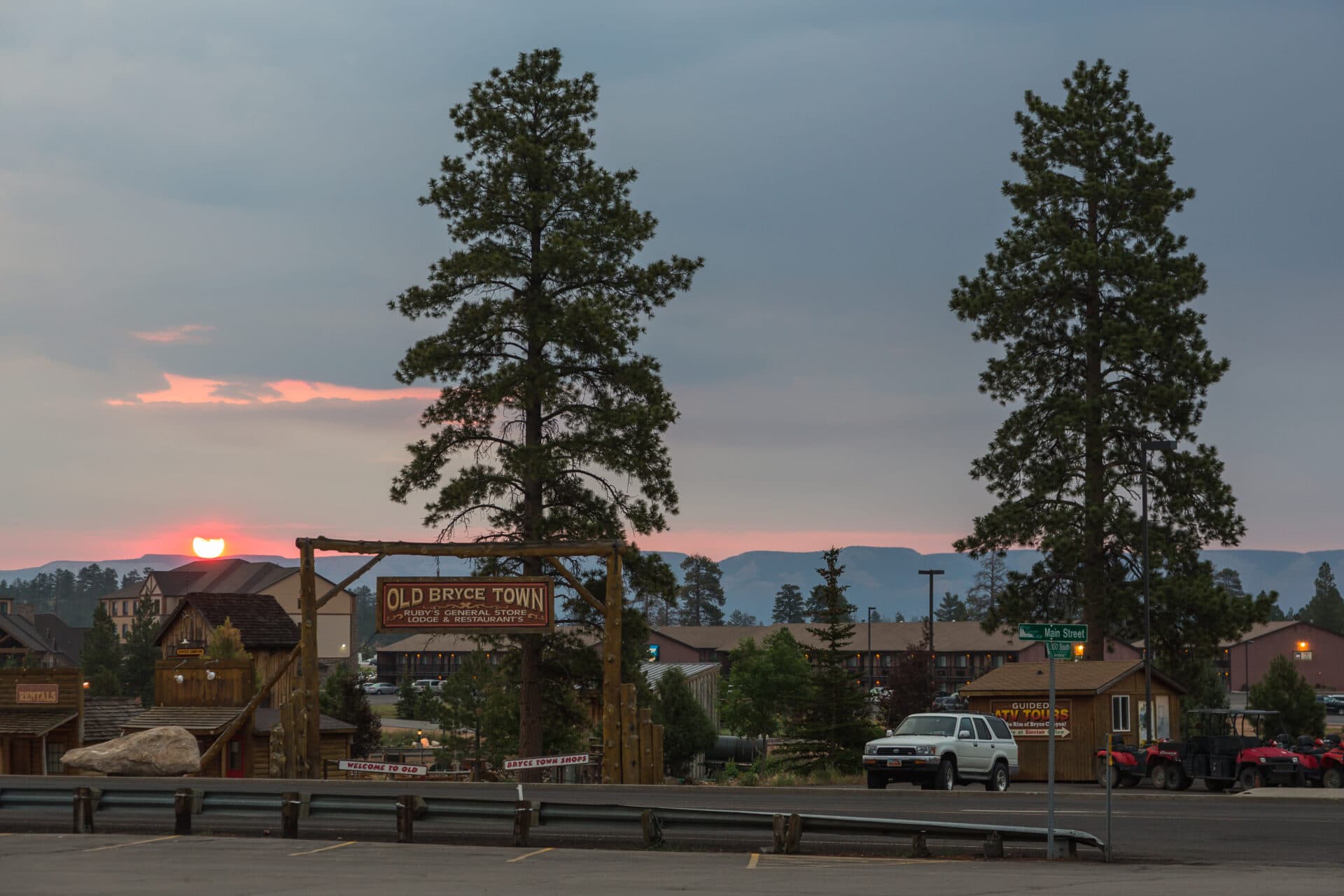
Where to eat in and around Bryce Canyon National Park
The Lodge at Bryce Canyon has a sit-down dining hall open for breakfast, lunch, and dinner. Menu items range from salads and light appetizers to full steak and fish dinners. Some gluten-free and vegetarian options are available.
Outside of the park, Bryce Canyon Coffee Company located inside the Bryce Canyon Inn in Tropic is another option for breakfast. The Canyon Diner at Ruby’s has pizza, burgers, nachos, and also serves breakfast; for an entertaining meal, check out the dinner show featuring barbeque and country music at Ebenezer’s Barn & Grill in Bryce Canyon City. For a white-tablecloth alternative, visit the Stone Hearth Grille in Tropic, which has outdoor dining with views of park sites like Bristlecone Ridge, the Sinking Ship, Fairyland Amphitheater, and Sunrise and Sunset points.
The beef brisket at i.d.k. BBQ in Tropic is highly recommended, and the restaurant is only 15 minutes from the park visitor center.
How many days should you plan to spend in Bryce Canyon National Park?
It’s possible to experience Bryce Canyon National Park in just a day, including a hike into the amphitheater to spend a few hours among the hoodoos, walk a segment of the rim trail, and perhaps have lunch in the Lodge at Bryce Canyon.
Three to 4 days, however, will provide plenty of time to explore most of the park (except the backcountry), including hiking the length of the Rim Trail, biking the Shared-Use Path, and taking the various trails through the amphitheater. Spending the night at the Lodge is highly recommended for its convenience and history; it’s the best way to ensure an early arrival to watch the sun come up at nearby Sunrise Point, for example. A multi-day visit will also allow visitors the opportunity to drive the southern section of the park road and make stops for additional hikes, and venture to the more distant Fairyland and Mossy Cave areas of the park.
Much like Grand Canyon National Park, if you have a short amount of time, Bryce makes it relatively easy to get some great views. However, being so far from a major population center definitely makes it a bit difficult to get there and back in a day, so you’ll probably want to plan on overnight accommodations somewhere along the way.
Make your road trip planning simple
Planning a trip to a national park can be overwhelming. Roadtrippers is here to make it simple. Use our maps to make it easier to plan your trip and find the most interesting stops. Planning your road trip with us is like having a local expert as your guide. Take your road trip planning to the next level with Roadtrippers.
